
The Nakajima Kikka was Japan's first jet aircraft. It was developed late in World War II and the first prototype had only flown once before the end of the conflict. It was also called Kōkoku Nigō Heiki.

The Aichi B7A Ryusei was a large and powerful carrier-borne torpedo-dive bomber produced by Aichi Kokuki for the Imperial Japanese Navy Air Service during the Second World War. Built in only small numbers and deprived of the aircraft carriers it was intended to operate from, the type had little chance to distinguish itself in combat before the war ended in August 1945.
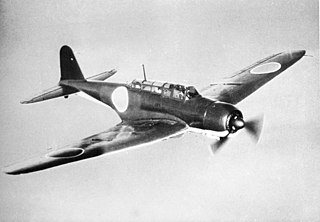
The Nakajima B5N was the standard carrier-based torpedo bomber of the Imperial Japanese Navy (IJN) for much of World War II. It also served as a high level bomber.
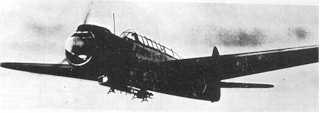
The Nakajima B6N Tenzan was the Imperial Japanese Navy's standard carrier-borne torpedo bomber during the final years of World War II and the successor to the B5N "Kate". Due to its protracted development, a shortage of experienced pilots and the United States Navy's achievement of air superiority by the time of its introduction, the B6N was never able to fully demonstrate its combat potential.
The Nakajima G10N Fugaku was a planned Japanese ultra-long-range heavy bomber designed during World War II. It was conceived as a method for mounting aerial attacks from Japan against industrial targets along the west coast and in the Midwest and the northeast of the United States. Japan's worsening war situation resulted in the project's cancellation in 1944 and no prototype was ever built.

The Nakajima Aircraft Company was a prominent Japanese aircraft manufacturer and aviation engine manufacturer throughout World War II. It continues as the car and aircraft manufacturer Subaru.

The Kawanishi Aircraft Company was a Japanese aircraft manufacturer during World War II.
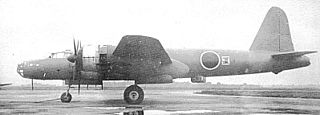
The Nakajima G8N Renzan was a four-engine long-range bomber designed for use by the Imperial Japanese Navy. The Navy designation was "Type 18 land-based attack aircraft" (十八試陸上攻撃機); the Allied code name was "Rita".

The Nakajima J1N1 Gekkō is a twin-engine aircraft used by the Japanese Imperial Navy during World War II and was used for reconnaissance, night fighter, and kamikaze missions. The first flight took place in May 1941. It was given the Allied reporting name "Irving", since the earlier reconnaissance version the J1N1-C, was mistaken for a fighter.
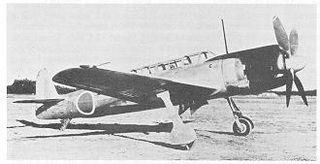
The Nakajima C6NSaiun was a carrier-based reconnaissance aircraft used by the Imperial Japanese Navy Air Service in World War II. Advanced for its time, it was the fastest carrier-based aircraft put into service by Japan during the war. The Allied reporting name was Myrt.

The Douglas DC-4E was an American experimental airliner that was developed before World War II. The DC-4E never entered production due to being superseded by an entirely new design, the Douglas DC-4/C-54, which proved very successful.

The Mitsubishi G3M was a Japanese bomber and transport aircraft used by the Imperial Japanese Navy Air Service (IJNAS) during World War II.

The Nakajima A6M2-N was a single-crew floatplane based on the Mitsubishi A6M Zero Model 11. The Allied reporting name for the aircraft was Rufe.

The Nakajima G5N Shinzan was a four-engined long-range heavy bomber designed and built for the Imperial Japanese Navy prior to World War II. The Navy designation was "Experimental 13-Shi Attack Bomber"; the Allied code name was "Liz".

The Nakajima Ki-49Donryu was a twin-engine Japanese World War II heavy bomber. It was designed to carry out daylight bombing missions, without the protection of escort fighters. Consequently, while its official designation, Army Type 100 Heavy Bomber, was accurate in regard to its formidable defensive armament and armor, these features restricted the Ki-49 to payloads comparable to those of lighter medium bombers – the initial production variant could carry only 1,000 kg (2,200 lb) of bombs.
The Hiro Naval Arsenal at Kure (呉), Hiroshima prefecture, was a production facility for seaplanes, flying boats, and aero engines for the Imperial Japanese Navy before and during World War II. It was largely destroyed in a raid by B-29 Superfortresses on 5 May 1945.
Mitsubishi Aircraft Company was the new name given by the Mitsubishi Company, in 1928, to its subsidiary, Mitsubishi Internal Combustion, to reflect its changing role as an aircraft manufacturer catering to the growing demand for military aircraft in Japan.
The Nakajima Ha5 is a twin row, 14 cylinder air-cooled radial aircraft engine built by the Japanese Nakajima Aircraft Company. The engine was a development of earlier single-row Japanese engines, the Kotobuki and Hikari, which had combined features of the Bristol Jupiter and Pratt & Whitney R-1340 Wasp designs.
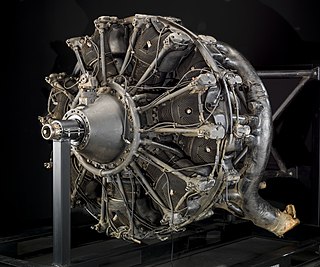
The Nakajima Mamoru engine was a 14-cylinder, air-cooled, two-row radial engine of 1870 hp. At some 44.9 litres displacement, it was one of the largest-displacement 14-cylinder radial engines in the world, rivalling the similar configuration Allies' American Wright Twin Cyclone engine of 42.7 litre and Soviet Shvetsov ASh-82 engine of 41.2 litre displacement levels, and was meant to compete with early 18-cyl engines. The Nakajima model designation for this engine was NAK while it was an experimental project, in service it was known as the NK7, and known as the Ha-103 by the Army and "Mamori" or "Mamoru" by the Navy. According to unified designation code it was Ha-36. The meanings of these two Japanese words are very similar, Mamori translates as protection and Mamoru, translates as to guard, protect, defend and obey.
The Kawasaki Ki-91 was a Japanese heavy bomber developed by Kawasaki Aircraft Industries during the later years of World War II.














